What Creates Bed Bugs? 7 Collective Factors That Creates Bed Bugs
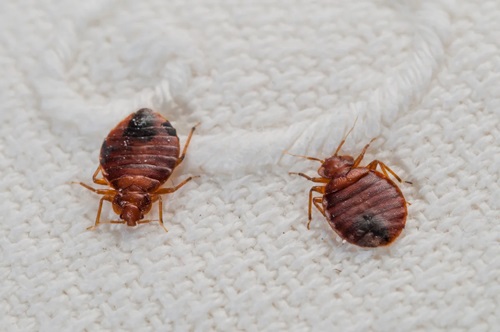
Table of Contents
ToggleCauses Of Bed Bugs
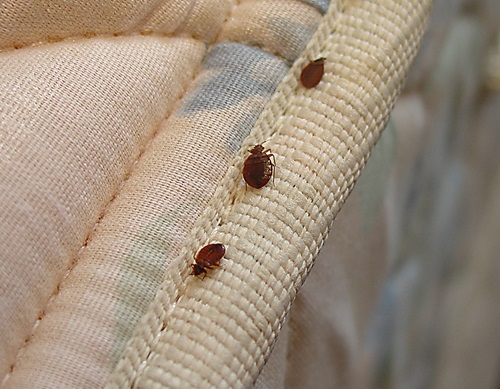
Travel and Infestation Sources
Bed bugs, those elusive pests, have mastered the art of hitchhiking. One of the primary causes of bed bug infestations is their knack for latching onto luggage during travels. Ever returned from a trip only to discover unwelcome guests in your home? These pests might have stowed away in your belongings, making your space their new habitat.
Safeguard Your Space
To combat this source of infestation, it's crucial to identify potential carriers. Regularly inspect luggage after trips, paying attention to seams and folds where bed bugs could hide. Additionally, exercise caution when purchasing second-hand furniture, as it might unknowingly bring these hitchhikers into your living space.
Environmental Factors
The environment plays a significant role in the proliferation of bed bugs. These pests have particular preferences when it comes to temperature and hiding spots. Understanding these environmental factors is key to preventing and controlling infestations.
Temperature Preferences
Bed bugs thrive in temperatures between 70-80°F (21-27°C), making human habitats an ideal haven. Be mindful of maintaining a consistent temperature in your living spaces to avoid creating an environment conducive to their reproduction.
Hiding Spots
Bed bugs are masters of concealment. They gravitate towards hiding spots close to their hosts, favoring cracks, crevices, and seams in furniture and bedding. Regularly inspect and seal potential hiding spots to disrupt their nesting grounds.
In summary, bed bugs enter homes through travel and infestation sources, utilizing their hitchhiking prowess. Environmental factors, such as temperature and hiding spots, inadvertently contribute to their spread. Vigilance and preventive measures are essential to safeguard your space from these unwanted visitors.
Life Cycle of Bed Bugs
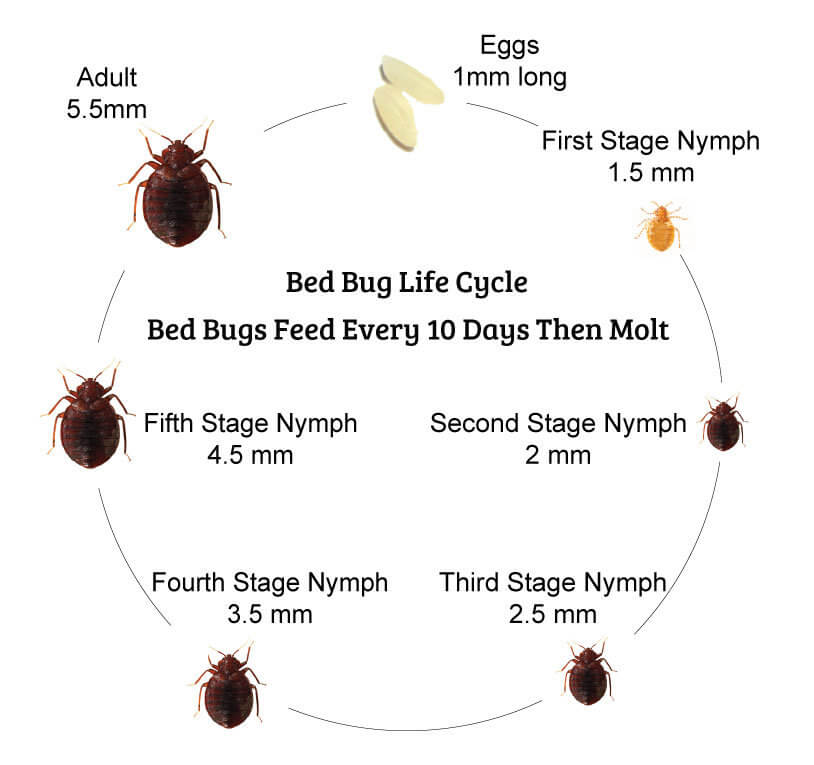
Egg Stage:
The bed bug life cycle initiates with the egg stage. Bed bug eggs are small, about the size of a pinhead, and are often laid in clusters. These eggs have a translucent appearance and may be challenging to spot due to their size and color.
Typically, they are laid in hidden locations, such as seams of mattresses or cracks in furniture. Early signs of infestation include the presence of these tiny, oval eggs in such areas.
Nymph Stage:
As bed bugs progress in their life cycle, they enter the nymph stage. Nymphs are juvenile bed bugs that emerge from the eggs. During this stage, bed bugs resemble smaller versions of adults but lack wings and are lighter in color.
Nymphs undergo several molts, shedding their exoskeleton as they grow. The challenges posed by nymphs during infestations include their ability to hide in tiny cracks and crevices, making detection and control more difficult.
Adult Stage:
The adult stage marks the culmination of the bed bug life cycle. Adult bed bugs are approximately the size of an apple seed, with a flat, oval shape. They are reddish-brown and can swell and turn darker after feeding.
Adults have well-developed wings, but they do not fly. Recognizing the distinct features of adult bed bugs is crucial for prompt identification and control. Their behavior, including feeding patterns and movement, aids in implementing effective eradication strategies.
In summary, understanding the life cycle of bed bugs, from the tiny eggs through the challenging nymph stage to the distinct features of adults, is essential for comprehensive pest management. Early detection and knowledge of each stage empower individuals to take proactive measures and seek professional assistance when needed.
Identification of Bed Bugs
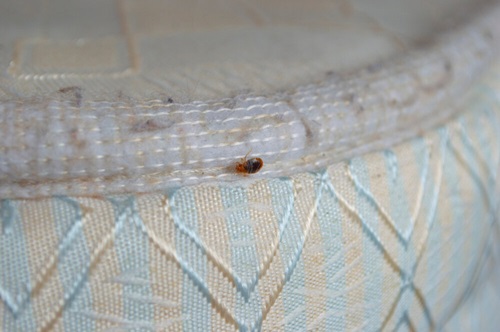
Physical Characteristics
Spotting bed bugs is crucial for effective control. Understanding their physical characteristics is the first step in identification.
Size and Color: Bed bugs are small, ranging from 1.5 to 4.5 mm in length. They typically have a reddish-brown color, but can appear darker after feeding on blood.
Shape: Bed bugs have an oval-shaped body, resembling an apple seed. Their flat and broad bodies make it easy for them to hide in cracks and crevices.
Antennae and Wings: Unlike some insects, bed bugs don't have wings and their antennae are short and segmented. This contributes to their characteristic appearance.
Movement: Bed bugs move relatively slowly, making it easier to spot them. However, they are adept at hiding in seams, folds, and other inconspicuous areas.
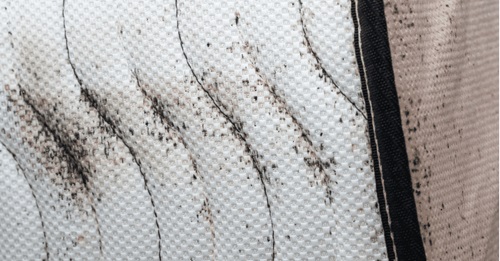
Signs of Infestation
Discovering the signs of a bed bug infestation is essential for early intervention.
Bite Marks: Bed bug bites often appear in clusters or a line on exposed skin. They are usually itchy and can lead to red, swollen welts.
Bloodstains: Presence of small bloodstains on sheets or pillowcases can indicate bed bug activity. These stains result from accidental crushing of bed bugs during sleep.
Dark Spots: Bed bugs leave behind tiny dark fecal spots on bedding or furniture. These spots are a clear indication of their presence.
Peculiar Odors: Some people describe the smell of a bed bug infestation as sweet or musty. If you notice an unusual odor in your living space, it might be a sign of a significant bed bug presence.
Exoskeletons: As bed bugs molt and grow, they shed their exoskeletons. Finding these translucent shells in and around hiding spots is a strong indication of an infestation.
By being aware of both the physical characteristics and signs of infestation, you enhance your ability to identify bed bugs promptly, allowing for effective control measures. Regular inspections and vigilance are key to preventing bed bug infestations from escalating.
Prevention of Bed Bugs
A combination of proactive measures in bedding and furniture maintenance, regular cleaning habits, and, when necessary, professional pest control services, forms a robust strategy for the prevention of bed bugs. By staying vigilant and implementing these practices, you can create an environment that is inhospitable to these unwelcome pests.

Bedding and Furniture Maintenance
To effectively prevent bed bug infestations, it's crucial to implement proactive measures in bedding and furniture maintenance.
Choose the Right Bedding Materials: Select bedding materials that are less conducive to bed bug habitation. Opt for tightly woven fabrics and avoid materials with seams or folds that could serve as hiding spots for these pests.
Regular Furniture Inspections: Conduct routine inspections of your furniture, especially in areas where you rest or sleep. Check seams, crevices, and any potential hiding spots for signs of bed bugs. Early detection is key to preventing infestations from escalating.
Use Bed Bug-Proof Covers: Invest in bed bug-proof covers for mattresses and pillows. These covers create a barrier that prevents bed bugs from infesting these common resting places.
Reduce Clutter: Declutter your living space to eliminate potential hiding spots for bed bugs. A tidy environment makes it harder for these pests to find suitable harborage.
Regular Cleaning Habits
Maintaining a clean living space is a powerful deterrent against bed bugs. Adopting effective cleaning habits helps reduce the risk of infestations and promotes overall well-being.
Regular Vacuuming: Vacuum your living space regularly, paying special attention to areas where bed bugs may hide, such as carpets, upholstery, and cracks in the floor or walls. Dispose of the vacuum bag in a sealed container to prevent bed bugs from spreading.
Laundry Routine: Wash bedding, curtains, and clothing regularly in hot water. The heat helps eliminate any potential bed bug infestations. Ensure thorough drying to further deter these pests.
Minimize Clutter: Keep your living space clutter-free. Bed bugs thrive in hidden spaces, and clutter provides ample hiding spots. A tidy environment makes it easier to spot and address any potential issues.
Professional Pest Control
While DIY methods can be effective for minor infestations, there are times when professional pest control services are necessary for comprehensive prevention and eradication.
Early Intervention: Professional pest control experts can identify and address bed bug issues early on, preventing the infestation from spreading. Early intervention is crucial for effective control.
Customized Treatment Plans: Pest control professionals develop customized treatment plans based on the severity of the infestation and the unique characteristics of the living space. This targeted approach ensures thorough eradication.
Knowledge and Expertise: Pest control professionals possess the knowledge and expertise to tackle bed bug infestations effectively. They understand the behavior of bed bugs and employ methods that go beyond what typical DIY solutions can achieve.
Follow-Up Inspections: Professional services often include follow-up inspections to ensure that the treatment was successful. This comprehensive approach provides long-term assurance against bed bug reinfestations.
Health Risks Associated with Bed Bugs
Allergic Reactions
Bed bug bites, though generally not harmful, can lead to allergic reactions in some individuals. The saliva injected by bed bugs during feeding may cause redness, swelling, and itching. For those with heightened sensitivity, more severe allergic responses can occur.
Mitigating Allergic Responses
If you suspect bed bug bites are triggering allergic reactions, consider the following steps:
Topical Treatments: Apply over-the-counter anti-itch creams or calamine lotion to alleviate itching.
Antihistamines: Take oral antihistamines to reduce allergic symptoms, such as itching and swelling.
Consult a Healthcare Professional: In severe cases, consult a healthcare professional for prescription medications to manage allergic reactions effectively.
Psychological Impact
Beyond the physical discomfort, bed bug infestations can have a significant psychological impact on individuals and families. The constant fear of being bitten and the distress caused by the presence of these pests can lead to anxiety, stress, and other mental health issues.
Strategies to Cope
To cope with the psychological toll of bed bug infestations, consider the following strategies:
Seek Emotional Support: Share your concerns with friends, family, or support groups to alleviate the emotional burden.
Professional Counseling: If the psychological impact becomes overwhelming, consider seeking professional counseling or therapy.
Effective Treatment: Addressing the bed bug infestation promptly with effective eradication methods can provide peace of mind and reduce psychological distress.
Maintain a Clean Environment: Adopting preventive measures and maintaining a clean living space can help prevent future infestations, contributing to a sense of security.
Understanding and addressing both the allergic and psychological aspects of bed bug infestations are crucial for comprehensive well-being. By taking proactive measures and seeking support when needed, individuals can navigate the challenges associated with these pests more effectively.
Eradication of Bed Bugs
DIY Methods
To combat bed bug infestations at an early stage, employing Do-It-Yourself (DIY) methods is a practical approach. Here are some effective strategies:
Vacuuming: Regularly vacuuming affected areas can help remove bed bugs, their eggs, and nymphs. Be thorough in vacuuming seams, crevices, and other hiding spots.
Natural Remedies: Embrace natural remedies like diatomaceous earth, tea tree oil, or lavender oil. These substances have proven to be deterrents or lethal to bed bugs without harmful chemicals.
Mattress and Furniture Encasements: Use special encasements designed for mattresses and furniture. These covers create a barrier, preventing bed bugs from entering or escaping, ultimately aiding in their control.
Professional Extermination
When DIY efforts fall short, turning to professional extermination becomes imperative. Pest control experts employ advanced methods to ensure thorough eradication:
Chemical Treatments: Professionals use safe and potent insecticides that effectively target bed bugs. These treatments are applied strategically to infested areas, ensuring maximum impact with minimal risk.
Steam Treatment: High-temperature steam is employed to kill bed bugs and their eggs. This method is especially useful for eliminating pests hiding in cracks, crevices, and fabrics.
Fumigation: In severe infestations, fumigation may be necessary. This involves the use of gas to reach and eliminate bed bugs in inaccessible areas, providing a comprehensive solution.
Heat Treatment
An innovative approach gaining popularity in bed bug eradication is heat treatment. Here's why it's effective:
Temperature Impact: Bed bugs are highly sensitive to temperature extremes. Heat treatment involves raising the temperature in the infested area to levels lethal to bed bugs, ensuring comprehensive elimination.
No Chemicals: Unlike chemical treatments, heat treatment is chemical-free, making it an eco-friendly option. It also eliminates the risk of residual chemicals in your living space.
Penetration: Heat can penetrate deep into furniture, mattresses, and other hiding spots where bed bugs reside. This ensures that the treatment reaches all life stages of bed bugs.
Myth Busting for Bed Bugs
Separate fact from fiction as we debunk common myths surrounding bed bugs. From their preferred habitats to misconceptions about bites, gain clarity on these prevalent misconceptions.
Arm yourself with accurate information about bed bugs. By dispelling myths, you empower yourself to make informed decisions in preventing and managing infestations.
Frequently Asked Questions FAQ’S
Q: Can bed bugs survive in clean environments?
A: Yes, bed bugs can thrive in both clean and cluttered spaces. They are attracted to warmth, carbon dioxide, and blood, making any environment susceptible.
Q: Are DIY bed bug treatments effective?
A: While some DIY methods can help control minor infestations, professional intervention is often necessary for comprehensive eradication.
Q: Do bed bugs transmit diseases?
A: No, bed bugs are not known to transmit diseases directly. However, their bites can lead to allergic reactions in some individuals.
Q: Can I prevent bed bugs when traveling?
A: Yes, take precautions when traveling by inspecting hotel rooms, keeping luggage off the floor, and washing clothing promptly upon return.
Q: How long does a bed bug infestation typically last?
A: The duration of an infestation depends on factors like the extent of the infestation and the effectiveness of eradication methods. Professional intervention often speeds up the process.
Q: Can I use essential oils to repel bed bugs?
A: While some essential oils may have repellent properties, they are not foolproof. Professional pest control methods are more reliable for complete bed bug eradication.
Conclusion
This guide provides a comprehensive guide on bed bug control and management, focusing on identifying causes and implementing preventive measures. It emphasizes the importance of knowledge in preventing infestations and ensuring a pest-free environment.
Regular inspections of living spaces for signs of infestation are crucial for effective control. By adopting a proactive mindset, homeowners can reduce anxiety and contribute to the long-term well-being of their living environment. By following this guide, they can achieve a bed bug-free future.
Other Bed Bugs Related Topics You May Be Interested In
- Best Strongest Bed Bug Killer Powder - Good Morning
- Best Strongest Bed Bug Killer Spray – Good Morning
- Uncovering Bed Bug Eggs: A Comprehensive Guide to Identification
- What Brings Bed Bugs Out of Hiding?
- Think You Have Bed Bugs? Here’s What to Do
- What Creates Bed Bugs? 7 Collective Factors That Create Bed Bugs
- What To Do If You Find A Bed Bug?
- What Kills Bed Bugs Instantly? DIY Methods & Home Remedies
- How to use lavender oil for bed bugs treatment? Home Remedy
- How to use peppermint oil for bed bugs treatment? Home Remedy
- How long does it take for rubbing alcohol to kill bed bugs?
- Does rubbing alcohol kill bed bugs?
- Does isopropyl alcohol kill bed bugs?
- What Brings Bed Bugs?
- What Bug Looks Like a Cockroach?
- Bed Bug Eggs: What Do Bed Bug Eggs Look Like?
- What Do Bed Bug Bites Look Like On Black People?
- How to Identify and Get Rid of Bed Bugs: A Comprehensive Guide
- How Does Terminix Get Rid of Bed Bugs?
- How to get rid of bed bugs from luggage?
- Are Bed Bug Sprays Safe for Children and Pets?
- Health risks associated with using bed bug sprays
- Bed Bugs: Why Women Scream Louder? Science Explains!
- How To Get Rid Of Bed Bug Bites Overnight?

